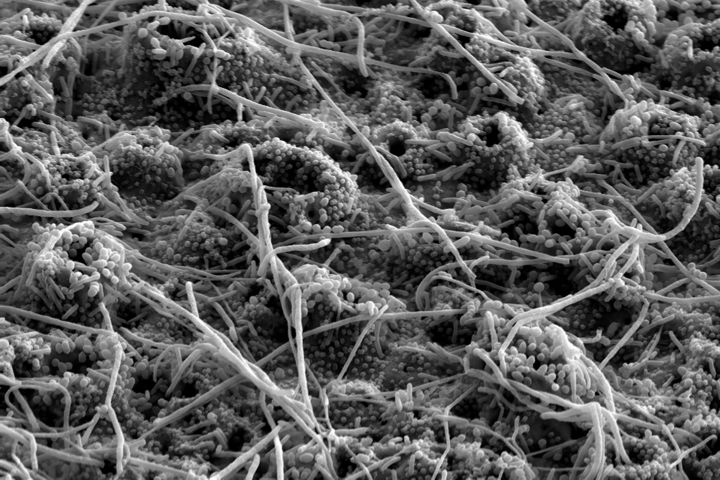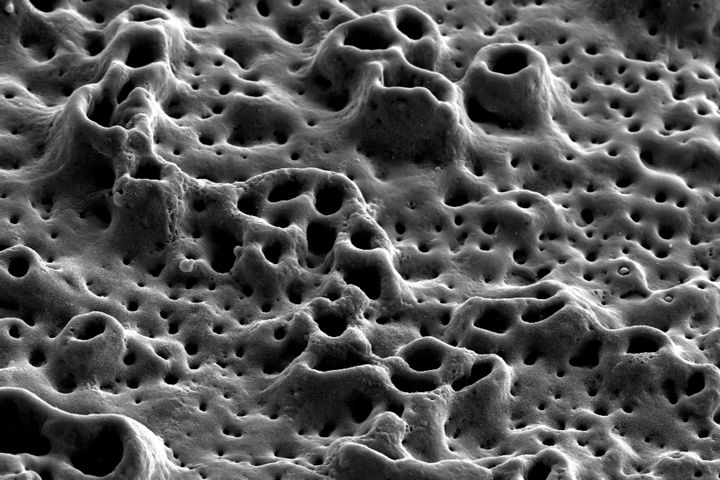
GalvoSurge was developed to remove
biofilm from dental implants in
the patient's mouth.
GalvoSurge removes the biofilm on the exposed, non-osseo-integrated ares of the dental implant.
GalvoSurge® has revolutionized the treatment of peri-implantitis by the introduction of electrolysis to clean and decontaminate affected dental implants. The biofilm, one of the main causes of the inflammatory response in the peri implant tissue, is removed on the exposed non-osseo-integrated areas of the dental implant. This is done by controlled application of low voltage to the metallic implant and simultaneous application of an electrolyte solution. The resulting reaction releases small hydrogen bubbles which are intended to detach the biofilm from the implant surface.
DID YOU KNOW
Dental biofilms resemble thriving cities with streets, alleyways, infrastructure, and a workforce. The bacterial cells in the biofilm are able to communicate and quickly adjust to changes due to mutualistic relationships and the flow of messages between interspecies through chemicals and metabolites. Primary colonizers, planktonic and free-floating bacteria with unique surface molecules (adhesins) that act as a molecular glue, lay the groundwork for dental biofilm.4,5
One of the strong advantages that the cohesion of the biofilm associated cells have is their resistance to antibiotics, chlorine, and detergents. It is no wonder why several currently existing biofilm removal methods have not been able to achieve stable results over time.1,2,3


Microscopic image of (left) complex dental biofilm on the surface of an implant and (right) same implant after cleaning with GalvoSurge®
In vitro studies on metallic implants report:
- No bacteria cultivation after treatment of implants with different surfaces and alloys covered with a mature biofilm with electrolytic cleaning2
- Bacterial elimination (residual bacteria<1%) after electrolytic cleaning of implants with biofilms and analysis6


Contact Us to Learn More
Straumann collects your information to facilitate the commercial relationship, contact you regarding future product offerings and promotion and all other permissible business purposes. Please see our Privacy Policy for more information.
